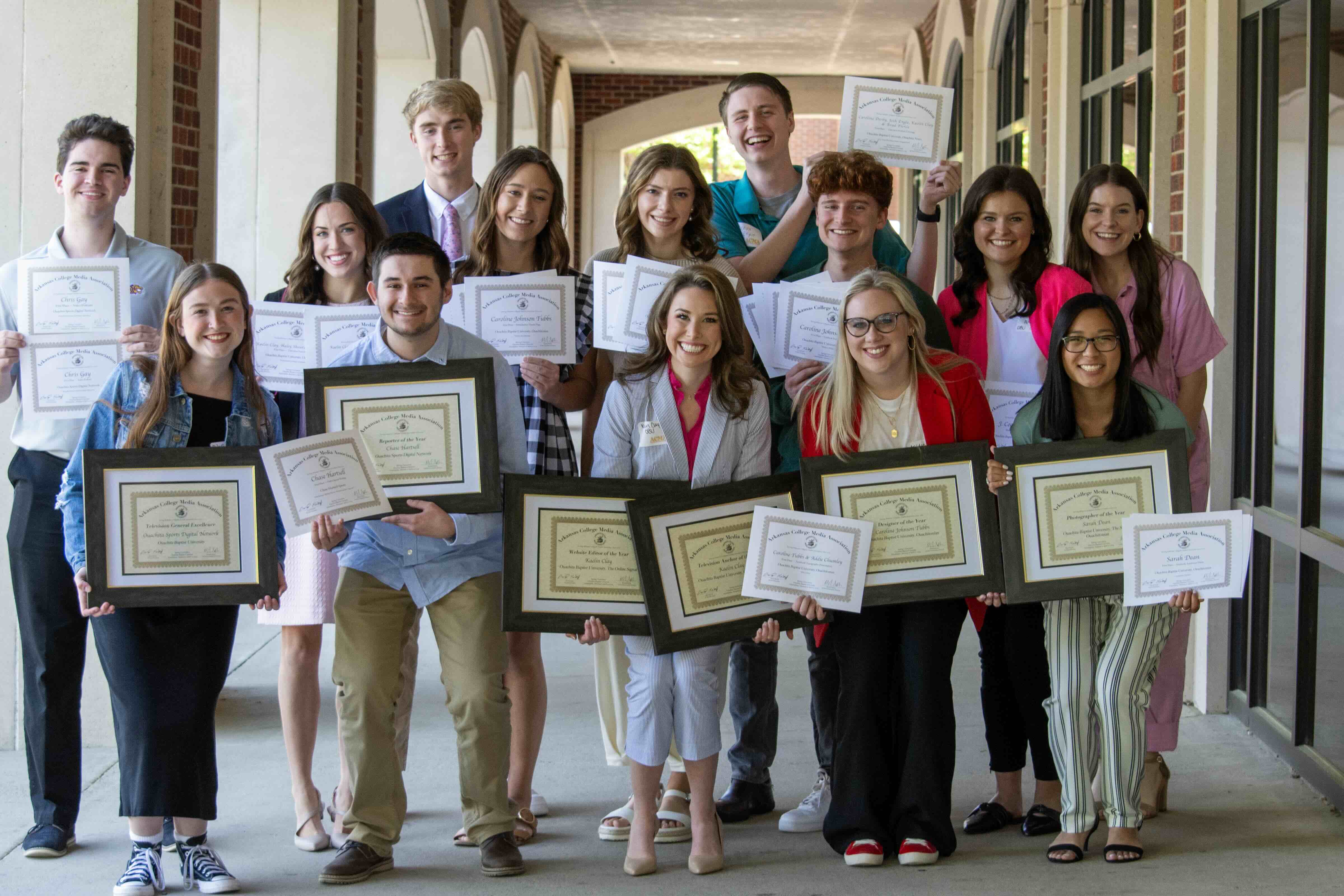Nine Ouachita Baptist University students were among participants who showcased their groundbreaking research at the 2013 Science, Technology, Engineering and Mathematics (STEM) Posters at the Capitol event held at the Capitol Rotunda in Little Rock, Ark., on Feb. 6. Each of the 14 participating colleges and universities from across the state was invited to display three posters to Arkansas legislators.
“This is the second year of this program, this presentation at the Capitol Rotunda,” said Dr. Marty Perry, Ouachita’s Nell I. Mondy Professor of Chemistry. Noting that students were able to share their work with the governor, lieutenant governor, senators and state representatives, he added that the event seeks “to impress upon lawmakers the importance of funding undergraduate research and science education.”
“The more that we can show how what we’re doing relates to the people of Arkansas, the more likely they are to offer their support,” said Dr. Nathan Reyna, OBU assistant professor of biology.
Dr. Tim Knight, dean of OBU’s Patterson School of Natural Sciences, noted that the work Ouachita students presented “is above and beyond the normal for both faculty and students.” He explained that this kind of research is not usually found at the undergraduate level and is only possible because of the long hours of dedicated work by faculty and students.
Presenting “Ajulemic Acid: A Potential Therapeutic for Ewing’s Sarcoma” were Elizabeth Blankenship, a senior biology major from Casscoe, Ark.; Sara Huneycutt, a junior biology major from Arkadelphia, Ark.; and Ryan James, a senior biology major from Benton, Ark. Caroline Gill, a senior biology major from Dumas, Ark., also contributed to their research.
With the supervision of Dr. Lori Hensley, associate professor of biology and holder of the J.D. Patterson Chair of Biology, students studied the effects of ajulemic acid on Ewing’s Sarcoma, an aggressive form of pediatric bone cancer with a 30 percent survival rate.
Traditionally, a mouse model would be used to test drugs in cancer research. In that model, human cancer cells are injected just under the skin of the mouse and tumors can be physically measured. Drugs can be injected directly into the tumors and they can continue to be measured to look for growth or regression.
“That’s not a realistic model for human bone cancer,” Hensley said, “because you can’t give a child a drug directly in the bone. So, we engineered our tumor cells to express an enzyme that makes fireflies light up. We can inject these tumor cells directly in the bone and still monitor their growth and regression through the intensity of the light emitted by the tumor.” In other words, a brighter glow means more cancer and a dimmer glow means less cancer.
“The drug is less toxic than normal chemotherapy,” Hensley said. “We don’t kill healthy cells with our drug.” She added that ajulemic acid has no negative side effects, like hair loss or nausea.
“If this drug does reach the market,” said student researcher Ryan James, “to be able to have our names on it is a really big honor.”
Kristin Johnson, a junior biology major from Benton, Ark., and Stephen Raines, a senior biology major from Camden, Ark., presented their poster, titled “Oxidative Stress and Its Relationship to Arkansas Agriculture and Human Disease.” Dr. Nathan Reyna supervised these students as they researched treatment options for oxidative stress.
“Oxidative stress,” Reyna said, “is essentially the stress that you hear about when people talk about antioxidants; they’re trying to relieve oxidative stress.” He explained that, because plants and humans share 70 percent of the genes related to cancer and disease, plants are ideal test subjects for oxidative stress treatments.
“We can look at the same genes so we get both sides of the story,” Reyna said. What originally began as an attempt to treat crop diseases in Arkansas, has become research applicable to humans everywhere.
Presenting “Discovering Drug Interactions Using Chemical Computer Simulations” were Shelby Cobb, a senior chemistry major from Pine Bluff, Ark.; Tim Horton, a junior physics and professional chemistry major from Arkadelphia, Ark.; and Hollyn McCarty, a senior chemistry and biology double major from Texarkana, Ark.
These students developed a computer model for “understanding, at the molecular level, what’s going on” internally when the body processes drugs, according to faculty supervisor Dr. Marty Perry.
“We’re not doing chemistry in the sense of the wet-lab stuff that most people think of chemistry being done,” Perry said. “We’re trying to understand how a drug specifically interacts with proteins in your body and how that drug gets metabolized and eliminated from your body.” By knowing more about how a drug is processed, drugs may be tailored to be more effective.
For more information about the Patterson School of Natural Sciences and the research being done there, contact Dr. Tim Knight at knightt@obu.edu or (870) 245-5528.





